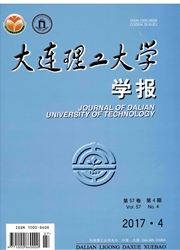

 中文摘要:
中文摘要:
为满足未来大功率台式电脑CPU的冷却要求,将平板热管和常规热管散热器结合提出了集成热管散热器的新概念;并用CFD数值模拟来代替试验研究,验证了用STAR-CD软件进行数值模拟的可靠性和可行性,并用数值模拟方法对散热翅片厚度、间距以及气流速度对集成热管散热器的流动与传热特性影响进行了研究.针对未来CPU冷却要求和散热器的设计要求,设计了新结构的集成热管散热器,并进行了试验测试.测试结果表明在气流速度为2.75 m/s下,新结构的集成热管散热器的热阻在0.1-0.2℃/W,在200 W时模拟CPU的表面温度仅为53℃,完全满足了对CPU的冷却要求.
 英文摘要:
英文摘要:
A concept of integrated heat sink using heat pipes employing phase change heat transfer mechanism of circular heat pipe and flat miniature heat pipe is proposed to cool higher heat dissipation power CPU. The numerical simulation method with STAR-CD software is used to investigate flowing and heat transfer performance of heat sink and determinate influences of variables of fin and air velocity on heat transfer and flowing performance of heat sink. For 200 W heat dissipation power of CPU, new structural parameters of integrated heat sink using heat pipes are provided in terms of design demands of heat sink. Finally, heat transfer performance of an improved integrated heat sink is also evaluated under 2.75 m/s air velocity. The experimental results show that its thermal resistance is in the range of 0.1-0.2 ℃/W and the surface temperature is only 53℃ when applying 200 W heat dissipation power to CPU, which has attained the demand of cooling CPU well.
 同期刊论文项目
同期刊论文项目
 同项目期刊论文
同项目期刊论文
 期刊信息
期刊信息
